Abstract
Of 35 stool specimens isolated and examined in 293 cells, 15 isolates contained adenovirus species 40 (Ad40), and 4 of these 15 isolates also contained a nonfastidious adenovirus species (Ad1 in two cases, Ad18 or Ad31) which was selected over Ad40 during serial passage in the 293 cells. The selection of Ad1 over Ad40 was examined in detail. Restriction analysis of intracellular DNA and the relative infectivity titers of Ad40 and Ad1 at each passage level after the inoculation of 293 cells with a particular stool specimen demonstrated that although the amount of Ad40 DNA synthesized far exceeded that of Ad1, the relative infectivity titer of Ad40 was low. The growth characteristics of Ad40 were then compared with those of Ad1, Ad18, and Ad41 in singly infected 293 cell cultures. One-step growth curves showed the same growth rate in each case, with a latent period of 12 h and a maximum titer at 24 to 36 h postinfection. Yields of infectious Ad40 virus were consistently 100- to 1,000-fold lower than those of Ad1. This difference was reflected by a reduced yield of total AD40 virions (p1.34) as determined by 35S labeling experiments. However, the 3- to 10-fold reduction in total yield of Ad40 virions did not account for the 100- to 1,000-fold reduction in the yield of infectious virus.
Full text
PDF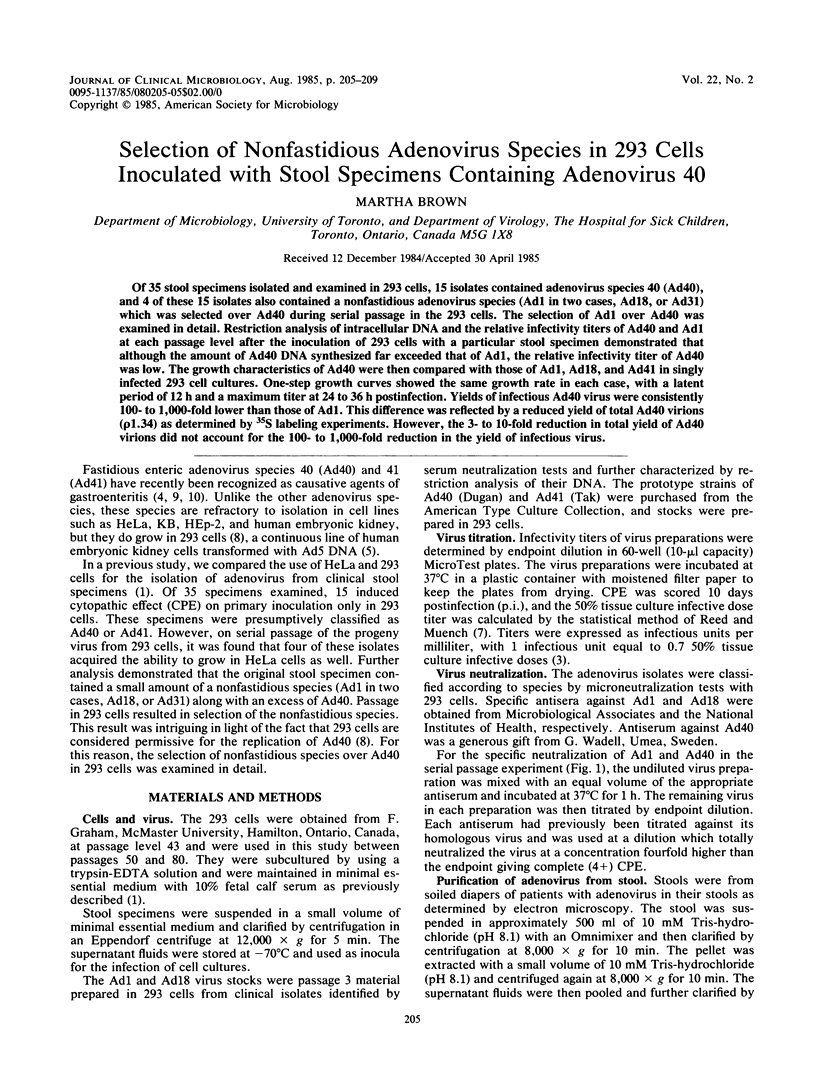
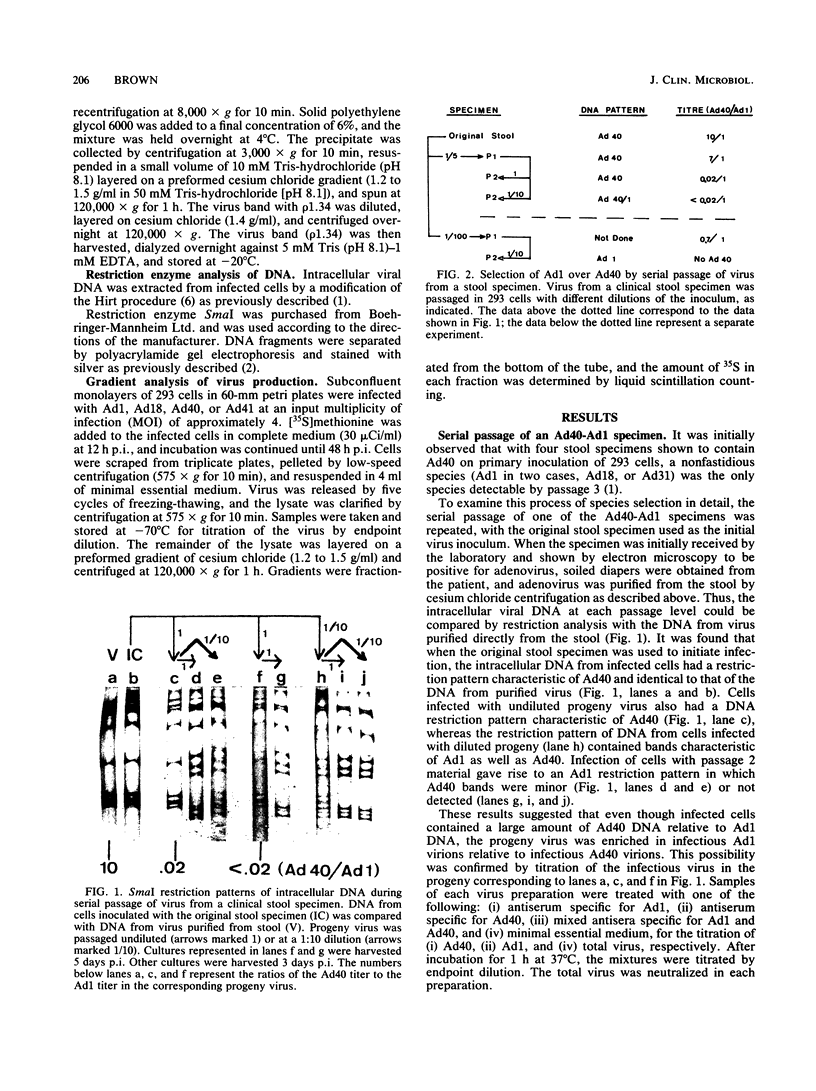
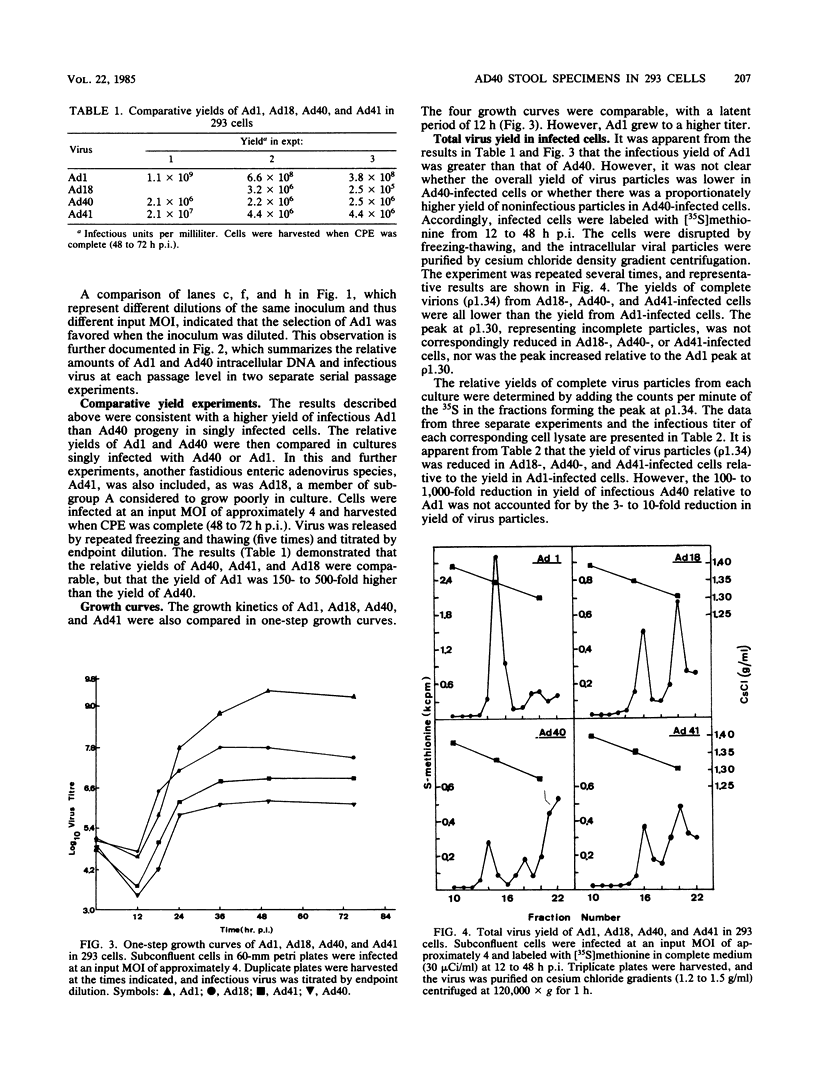
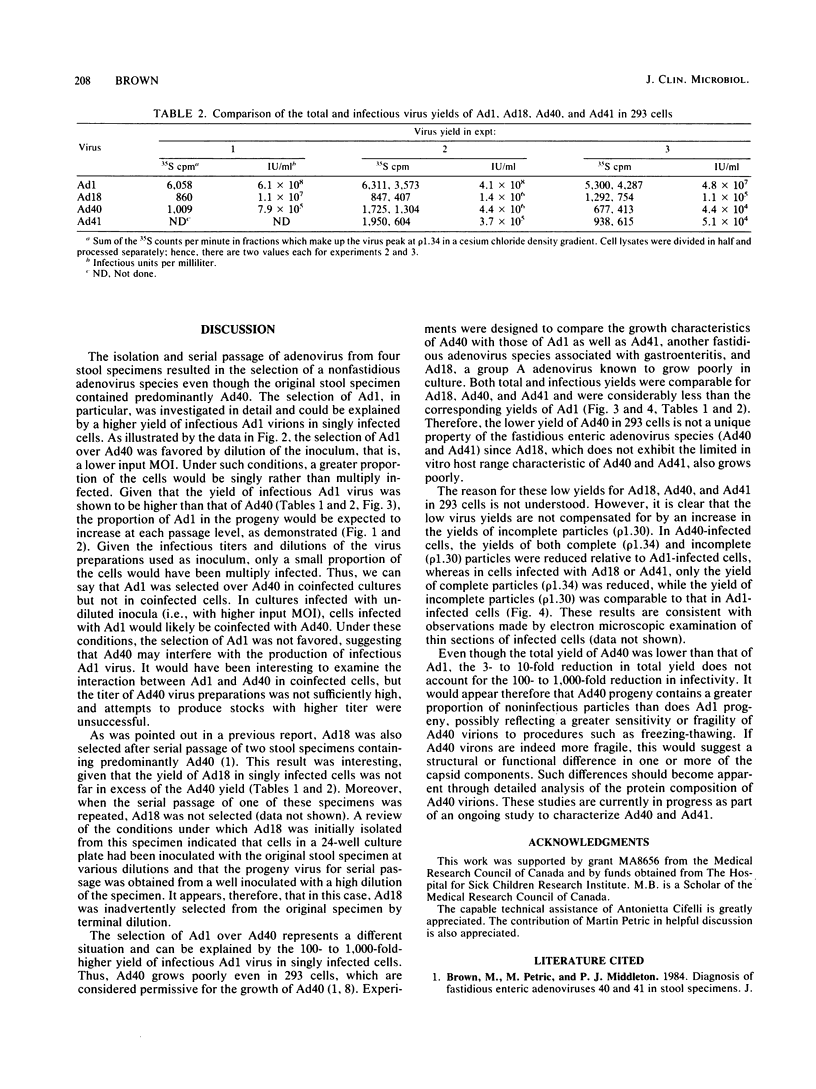
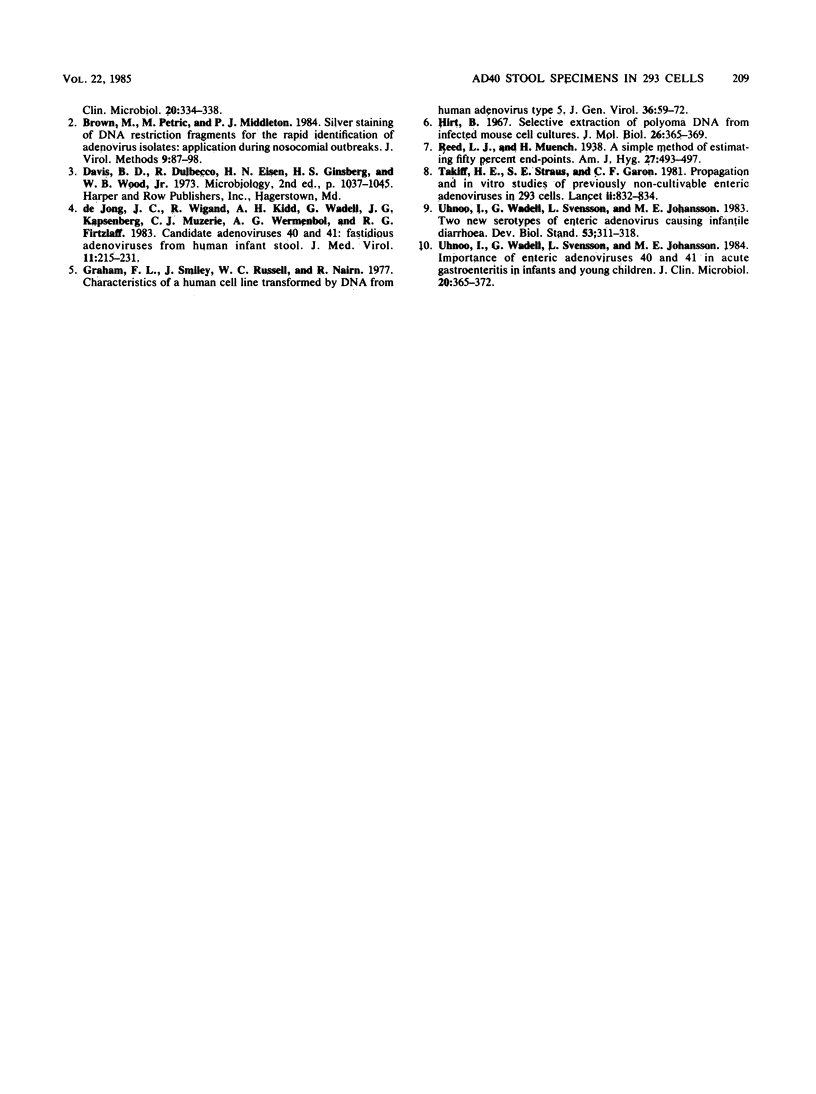
Images in this article
Selected References
These references are in PubMed. This may not be the complete list of references from this article.
- Brown M., Petric M., Middleton P. J. Diagnosis of fastidious enteric adenoviruses 40 and 41 in stool specimens. J Clin Microbiol. 1984 Sep;20(3):334–338. doi: 10.1128/jcm.20.3.334-338.1984. [DOI] [PMC free article] [PubMed] [Google Scholar]
- Brown M., Petric M., Middleton P. J. Silver staining of DNA restriction fragments for the rapid identification of adenovirus isolates: application during nosocomial outbreaks. J Virol Methods. 1984 Oct;9(2):87–98. doi: 10.1016/0166-0934(84)90001-6. [DOI] [PubMed] [Google Scholar]
- Graham F. L., Smiley J., Russell W. C., Nairn R. Characteristics of a human cell line transformed by DNA from human adenovirus type 5. J Gen Virol. 1977 Jul;36(1):59–74. doi: 10.1099/0022-1317-36-1-59. [DOI] [PubMed] [Google Scholar]
- Takiff H. E., Straus S. E., Garon C. F. Propagation and in vitro studies of previously non-cultivable enteral adenoviruses in 293 cells. Lancet. 1981 Oct 17;2(8251):832–834. doi: 10.1016/s0140-6736(81)91104-1. [DOI] [PubMed] [Google Scholar]
- Uhnoo I., Wadell G., Svensson L., Johansson M. E. Importance of enteric adenoviruses 40 and 41 in acute gastroenteritis in infants and young children. J Clin Microbiol. 1984 Sep;20(3):365–372. doi: 10.1128/jcm.20.3.365-372.1984. [DOI] [PMC free article] [PubMed] [Google Scholar]
- Uhnoo I., Wadell G., Svensson L., Johansson M. Two new serotypes of enteric adenovirus causing infantile diarrhoea. Dev Biol Stand. 1983;53:311–318. [PubMed] [Google Scholar]
- de Jong J. C., Wigand R., Kidd A. H., Wadell G., Kapsenberg J. G., Muzerie C. J., Wermenbol A. G., Firtzlaff R. G. Candidate adenoviruses 40 and 41: fastidious adenoviruses from human infant stool. J Med Virol. 1983;11(3):215–231. doi: 10.1002/jmv.1890110305. [DOI] [PubMed] [Google Scholar]



